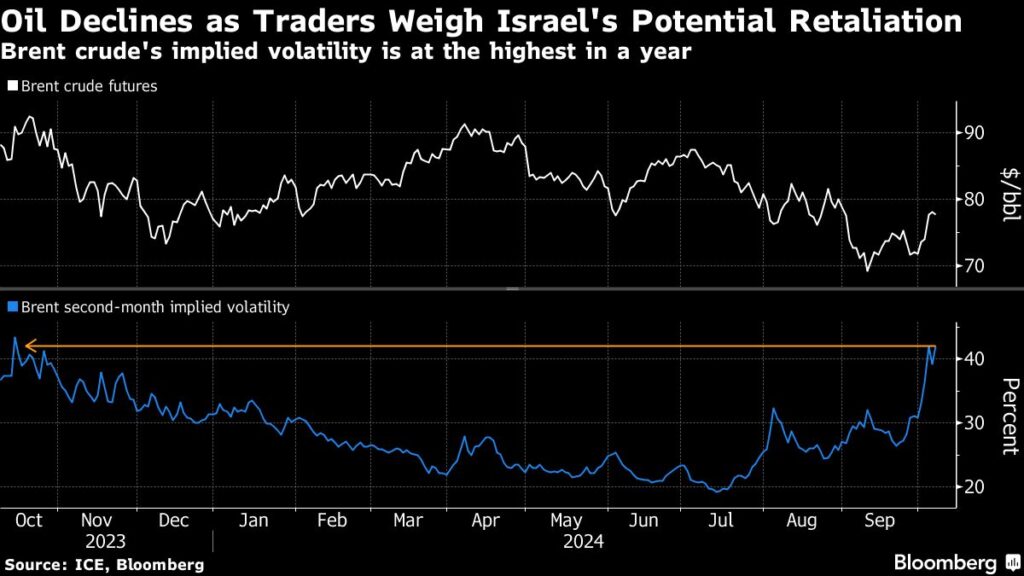Oil prices opened the week on a downward trend as market participants awaited potential Israeli retaliation against Iran following a missile attack on Israel. President Joe Biden advised against striking Iran’s oil fields, indicating uncertainty regarding the timing of Israel’s response. Brent crude dipped below $78 a barrel after experiencing its largest weekly increase since January 2023, while West Texas Intermediate hovered around $74. The escalation of tensions due to Iran’s attack has intensified concerns about a broader conflict in the Middle East and led to increased activity in the options market, though lingering doubts about demand from China and oversupply pressures are restraining prices.
The Middle East remains in a precarious state as Israel resumes military operations in northern Gaza and maintains air assaults in Lebanon. Iran’s oil production has nearly returned to full capacity, making it susceptible to potential military actions that could destabilize the energy market. Market analysts describe the current situation as a “waiting game,” with traders seeking clarity on regional developments. Any disruption in Iran’s energy infrastructure would likely drive Brent crude prices above $80, signaling an increase in tensions that could have significant implications for the oil market.
Recent trends in the options market indicate a prevailing bias towards bullish positions, suggesting that investors are betting on future price gains. A rise in implied volatility for Brent has reached levels not seen in nearly a year. Furthermore, money managers have been increasing their net-long positions, reflecting a general optimism about the global benchmark’s future performance. Analysts at Goldman Sachs have projected a potential surge in Brent prices into the $90s if Iranian oil supplies face disruption, underpinning the volatility and uncertainties surrounding Middle Eastern geopolitics.
In contrast, JPMorgan Chase has expressed skepticism regarding the efficacy of targeting Iran’s energy infrastructure as a preferred strategy, underscoring the complex dynamics at play. This divergence highlights the varied perspectives among market analysts and strategists on how geopolitical risks could impact oil supply and prices. Complicating the picture further, Saudi Arabia has adjusted its oil pricing; raising rates for Asian buyers more than anticipated, while simultaneously reducing prices for exports to the US and European markets. This maneuver could be indicative of the Kingdom’s strategy to maintain market share amid fluctuating global demand.
Market sentiment is being influenced not only by geopolitical factors but also by the economic outlook for demand, particularly from China, the world’s largest oil importer. With China’s economic growth facing headwinds, expectations are building that the Chinese government will implement a stimulus package aimed at revitalizing its economy. The National Development and Reform Commission’s upcoming press briefing on initiatives to enhance public spending is keenly anticipated by market observers and may provide insight into the country’s future oil demand trajectory.
As traders navigate this multifaceted landscape, the interplay of geopolitical tensions, supply dynamics, and economic policy initiatives will continue to shape the oil market. The potential for escalated conflict in the Middle East, coupled with the uncertainty surrounding China’s economic recovery, suggests that volatility is likely to persist in the near term. Analysts and market participants are poised to respond to any developments that could impact supply and pricing, emphasizing the importance of keeping a close watch on both regional instability and policy decisions from major governments.

